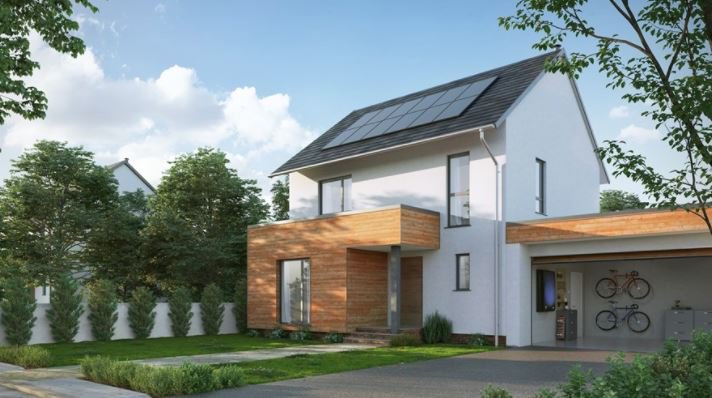IMAGINE a world where you arrive home from work and plug your electric vehicle in to its charger, which is programmed to start only when energy is cheapest. You turn on your TV, heating and cooker, which are all powered by the energy produced by your solar panels and stored in your car battery. You check an app to see how much extra cash you’ve made through selling any unused energy you’ve generated back to the grid, or even to your neighbours. You watch your kids playing, safe in the knowledge that their generation won’t be reliant on dirty power stations, and they will live in a world where CO2 emissions have been drastically reduced.
So, just how realistic is this vision? Being partially “off-grid” might be a concept you have heard of in connection with people who live without relying on grid energy, but with the growth of solar panels and home battery storage, households could start to become a vital part of the grid itself and reap financial benefits too.
Solar panels may not feature on your list of home improvements, but you may be surprised to learn that more than 840,000 UK homes already have them, with the cost falling by a huge 70 per cent since 2010. Adding a home battery, which allows you to store excess from the electricity you generate for use later, is a great way to increase the benefits. As we can’t choose when the sun shines, the majority of people export more than half of their generated electricity back to the grid. With a battery, you can store this electricity until you need it.
Another way that we can use our homes as mini power stations is through electric vehicles. An electric car is basically a battery on wheels, and through a “vehicle-to-grid charger” (V2G), it can send power back to the grid when demand is high. As an added bonus, if your car is used for V2G, you’ll get paid for the energy you send to the grid.
At the heart of our mini home power stations are smart meters. Currently being installed across the country to replace old analogue energy meters, they accurately monitor the energy you’re using and tell you how much it costs in near real-time. But they are also key to making this new energy future work well.
They are the tool needed to reward customers for using energy flexibly – for example through providing cheap tariffs for using more energy when the wind is blowing and the sun is shining. New energy tariffs for homes with electric vehicle chargers or solar battery systems can deliver significant savings, with smart meters working with those technologies to help households use energy when it is cheapest.
And the benefits of domestic energy generation and storage don’t just stop at your front door. As renewables grow to substantial levels and electricity demand soars, the energy grid will need greater flexibility, including the storage of electricity in batteries across the country. By generating, storing and selling our own electricity, we can help towards decarbonisation, and in doing so make a significant contribution to a cleaner Britain.
One easy step we can all take towards this eco-friendly future is to ask energy suppliers about getting a smart meter installed – they’re an easy way we can all help work towards a carbon-neutral world.
Read more: The Herald Scotland





